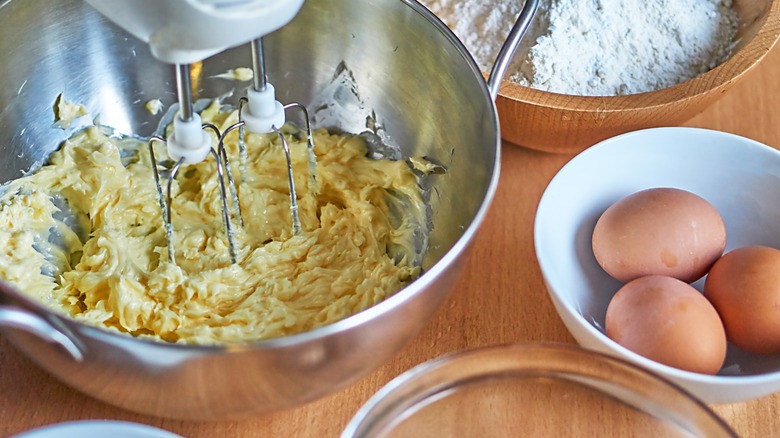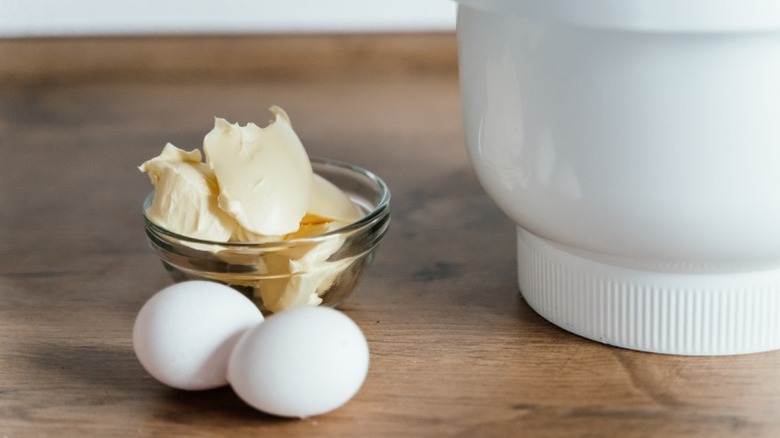Will Using Cold Ingredients Ruin Your Cake?
While there's nothing wrong with experimenting with recipes, experienced bakers know that making the perfect cake comes down to an exact science. Your ingredients and techniques have to be just right, or you're bound to make a huge mistake that will ruin your cake. One such blunder besides a measuring mistake when it comes to ingredients is their temperature.
Using cold ingredients won't ruin your cake, per-se, but if you're looking for perfection, have everything at room temperature. Most recipes (like this classic chocolate cake) call for eggs, butter, sugar, and other dairy products. These ingredients are meant to blend together smoothly in what's called an emulsion and trap air within the batter. Then, when the cake bakes, the air is released, leaving an even and fluffy baked good. Cold ingredients do not mix as well as room temperature ones, which prohibits this process from occurring. Butter, for example, is often added to sugar as a first step. If your sticks are too cold, the sugar crystals cannot effectively aerate the butter during the creaming process.
One baker known online as @benjaminthebaker illuminated the differences between room temperature and cold ingredients in a TikTok showing 2 cakes side by side. The batter crafted with cold ingredients was clumpy and curdled, and the resulting cake was domed and unevenly baked. In comparison, the room temperature batter was smooth, and the baked cake was even, flat, and perfectly browned on top. Additionally, this cake's interior was softer.
Ensuring your ingredients are ready for baking is simple
You might have to wait a few extra minutes to get started on your cake batter, but warming your refrigerated ingredients to room temperature is fairly simple. When it comes to butter, your best bet is leaving it out on the counter for around 1 hour prior to use. To speed up the process, you could place it near a preheating oven or dice it into smaller cubes. Or, if you're really in a rush, you can use the microwave. 5-10 second intervals are best, and if you can decrease the power on your microwave, that's even better — melted butter is just as bad as cold butter when it comes to creaming. If a recipe calls for milk, it can also be taken out to warm up alongside your butter, or warmed in the microwave or a saucepan if needed sooner rather than later.
For your eggs, fill a bowl with warm water and place the required amount of eggs inside for 5-10 minutes. You'll know they're ready to use when they're no longer cool to touch. You can also warm your eggs by placing them in a bowl in your sink and letting warm water run over them for a few minutes. For both of these methods, it's important to make sure the water isn't too hot because then your eggs will start to cook inside their shells (which also isn't great for your cake batter).

